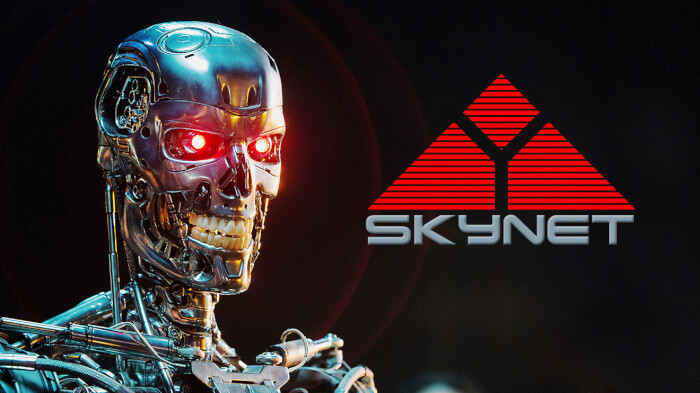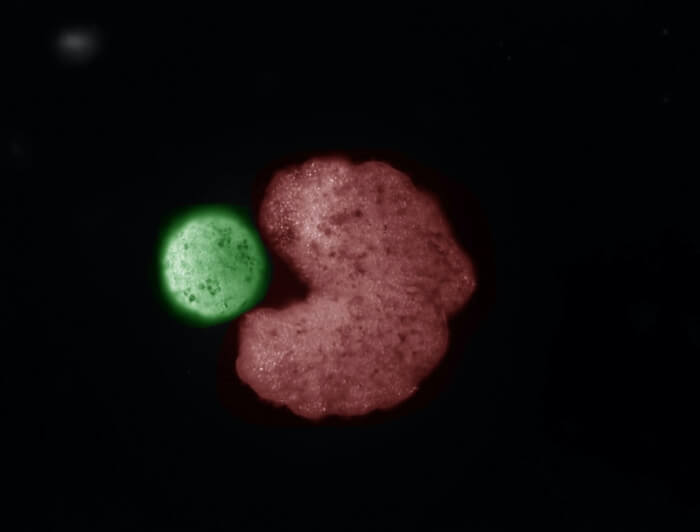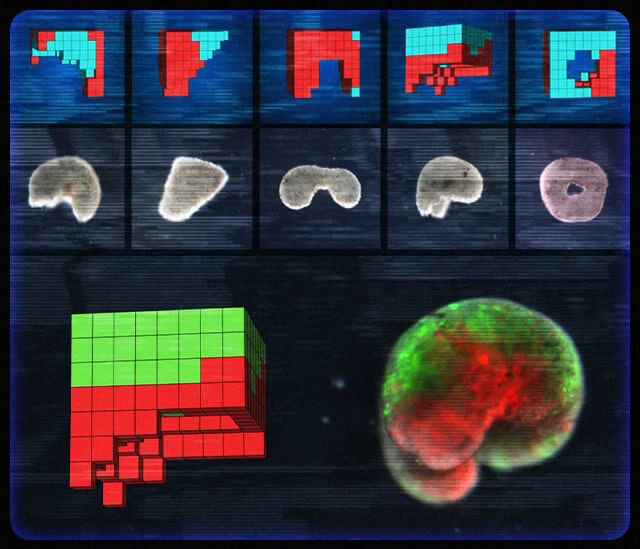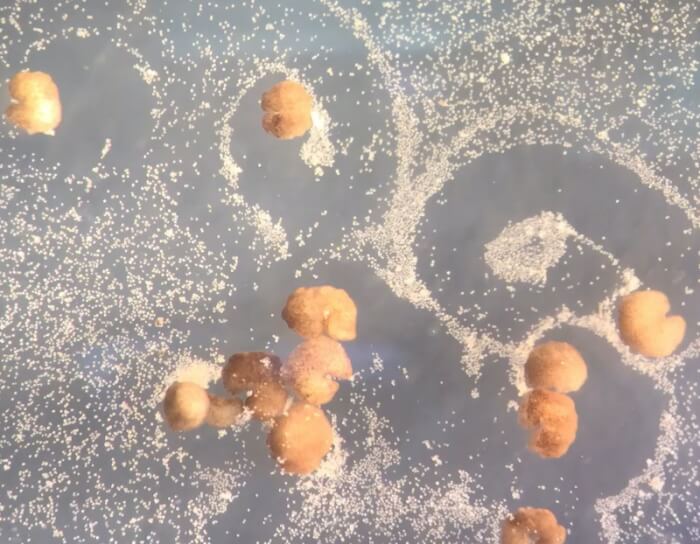2021: AI Has Helped Robots Reproduce, Officially Blurring The Line Between Machines And Creatures
Are we creating a Skynet or the seeds of the Terminator?
Rene Descartes, the author of the saying "I think; therefore I am", the father of modern philosophy, who gave birth to analytic geometry and is considered the most famous European mind in the 17th century once said: Human body isn’t far from a complicated machine.
Nearly 400 years ago, Descartes' timeless thoughts was not approved. There was an anecdote that the Queen of Sweden, after hearing what Descartes said, ordered him to keep an eye on the clock in the room, to see when it would give birth to a child like a human
Descartes died just a few months later, of a mysterious pneumonia. Unfortunately, he couldn’t live up to today to see scientists at the University of Vermont use a supercomputer to create the world's first biological machines that can reproduce themselves.
But what does this mean? Are we creating a Skynet or the seeds of the Terminator?
It’s hard to know when these robots can take over the world. However, remember that this is still 2021, and once a robot can reproduce, the line between machine and creature has officially been blurred.
They are called Xenobots, a brand new "life form" introduced over a year ago. Xenobots are neither an organism nor a robot nor a biohybrid robot. It is a completely biological robot.
They then placed them in a virtual evolutionary environment, where the supercomputer could filter through millions of scenarios to create an optimal biological robot blueprint for each task, such as carrying a drug molecule to a cancerous tumor or to clean up plaque in the blood vessel walls.
The task of building Xenobots was then passed to a team of biological engineers at Tufts University, who would choose the materials for their robot from the stem cells of the African frog Xenopus laevis instead of steel and metal.
These stem cells are extracted from frog embryos, which are about to become tadpoles. But here, Tufts engineer will select a few hundred of these cells after their incubation, and then use a microsurgery tool to cut and rearrange them into machine parts that follow the blueprint the supercomputer has drawn up.
When the last cell is in place, the machine kicks in. A Xenobot is officially born.
"You look at the cells we've been building our xenobots with, and, genomically, they're frogs. It's 100% frog DNA - but these are not frogs," says biology professor Michael Levin, director of the Allen Discovery Center at Tufts University.
"As we've shown, these frog cells can be coaxed to make interesting living forms that are completely different from what their default anatomy would be."
The story, if ends here, is already a big breakthrough, as a completely new life form - a biological robot – has been created. But the scientists realized the potential of Xenobots didn't stop there. They want to help this robot have the ability to reproduce on its own, to create new generations of Xenobots.
It's a story of evolution, as any organism that wants to survive long must develop the ability to reproduce. Over billions of years, organisms have evolved in many ways to equip themselves with sophisticated regenerative skills, from plant germination, asexual and sexual reproduction in animals to virus replication within the host cell.
So what form of reproduction can a Xenobots choose?
This brings us back to how this life form might have been created. Xenobots 1.0 was installed by an engineer using a microsurgery tool. Basically, he would put clusters of frog stem cells together. The specialty of frog stem cells is that they have magnet-like adhesions.
When one cell is placed near another, they clump together and form the part of the machine. If you accidentally misplace a cluster of cells, you can use tweezers to separate them to reposition. Just like that, a bioengineer could create Xenobots 1.0.
This work was assigned back to the team at the University of Vermont, who would run their virtual evolution environment in supercomputers to come up with the blueprint. The results suggest that if some frog stem cells can differentiate and develop outer cilia, similar to the tails of tadpoles, these cilia could help Xenobots 2.0 move and assemble autonomously.
Clusters of cells with cilia can swim around, self-assemble other stem cells and grow into a Xenobots 2.0 without outside intervention by a bioengineer, except for settings of original clusters of cells.
Xenobots 3.0, which has just been announced by scientists at the University of Vermont and Tufts University in the Proceedings of the American Academy of Sciences on November 29, is a step further. In it, the initial cell cluster setup was transferred to Xenobots.
The scientists continued to run virtual evolution to browse through billions of simulations of cell clusters that could establish themselves to reproduce. An artificial intelligence algorithm, after months of calculations, has come up with a Xenobots 3.0 blueprint that resembles the image of Pac-Man, said Dr Sam Kriegman from the University of Vermont.
"It’s very non-intuitive. It looks very simple, but it’s not something a human engineer would come up with. Why one tiny mouth? Why not five?"
The children then continues to gather new cell clusters to create the Pac-Man grandchildren Xenobots. Like that, many generations of Xenobots can be born from a single Xenobots 3.0.
Dr Kriegman and his colleagues call this form of reproduction "kinematic self-replication". In nature, it was once known at the molecular level. But kinematic self-replication has never been observed at the cellular or organism scale.
With the help of AI and supercomputers in virtual evolutionary environments, scientists have done it for the first time, creating biological robots capable of replicating themselves – or in other words, they were able to reproduce on their own.
This has officially blurred the line between machine and organism, between self-assembled systems and a form of reproduction.
That's the question you might ask when watching these tiny frog cell clusters swim around a petri dish, reproduce in just a few weeks, and die when no more nutrients are added into the dish.
And it's a huge space. "We found Xenobots that walk. We found Xenobots that swim. And now, in this study, we’ve found Xenobots that kinematically replicate," said Professor Bongard.
With Xenobots 1.0, scientists at Tufts University have admitted their creation could start a terrible age where biological robots could be developed into weapons. If they have the ability to interact with the human nervous system, these robots could even possess creatures, including humans.
But Xenobots 1.0 is, after all, a man-made product, which we can manage. Xenobots 3.0 with self-regeneration is another story. It raises concerns because reproducing means that Xenobots 3.0 has the potential to evolve on its own.
Can they improve themselves with each generation and accumulate beneficial mutations? In theory the answer is yes. But what will Xenobots evolve for? It leads us to how this robot was created by an AI.
The algorithm ran billions of scenarios in a virtual environment to create the appearance of a Pac-Man for Xenobots. This marks a milestone in which AI can design purpose-built biological machines.
Those are the reasons why the Xenobots lab at the University of Vermont and Tufts University is subject to the scrutiny of federal, state and institutional ethics experts.
Experts are tasked with regularly inspecting the project to make sure these biological robots are only allowed to exist inside the laboratory, and that they can all be "extinguished" easily.
"Now, these Xenobots are not what keep me awake at night," Professor Bongard said. As soon as you stop feeding the petri dishes, they all die.
On the contrary, he said the application potential of these Xenobots is huge. The biorobots can be programmed to help with tasks such as pulling microplastics out of the ocean floor and removing plaque in blood vessel walls.
Xenobots 3.0's kinematic self-replication can be applied in the field of regenerative medicine. "If we knew how to tell collections of cells to do what we wanted them to do, ultimately, that’s regenerative medicine - that’s the solution to traumatic injury, birth defects, cancer, and aging," said Professor Levin from Tufts University.
In principle, Xenobots 3.0 is also a proof of concept for self-replicating robotic systems. It was first proposed by Hungarian-American scientist John von Neumann in 1948.
Neumann said that when a robot can regenerate itself using raw materials found in the environment, it can reproduce exponentially and has huge potential applications in space exploration.
He proposed a scenario in which a parent spacecraft could travel to planets, automatically mine minerals, and create an infinite number of child spacecraft. In the world of the Matrix, humans have also applied this principle to create a solar shield from nanomachines, to prevent the army of rebellious robots from exploiting light energy.
In short, a disruptive technology like Xenobots 3.0 can have a lot of helpful uses, depending on how we can control them. "We need to create technological solutions that grow at the same rate as the challenges we face," said Professor Bongard.
As for engineers at Tufts University, Professor Levin said that humans entering the land of biological robots is an inevitable result in the development of science. It is important that we start building the legal foundations and rules to control this new sector.
"Our study is actually promoting a solution to address people's fears," said Professor Levin.
H/T: harvard.edu
Rene Descartes, the author of the saying "I think; therefore I am", the father of modern philosophy, who gave birth to analytic geometry and is considered the most famous European mind in the 17th century once said: Human body isn’t far from a complicated machine.
Nearly 400 years ago, Descartes' timeless thoughts was not approved. There was an anecdote that the Queen of Sweden, after hearing what Descartes said, ordered him to keep an eye on the clock in the room, to see when it would give birth to a child like a human
Descartes died just a few months later, of a mysterious pneumonia. Unfortunately, he couldn’t live up to today to see scientists at the University of Vermont use a supercomputer to create the world's first biological machines that can reproduce themselves.
But what does this mean? Are we creating a Skynet or the seeds of the Terminator?
It’s hard to know when these robots can take over the world. However, remember that this is still 2021, and once a robot can reproduce, the line between machine and creature has officially been blurred.
They are called Xenobots, a brand new "life form" introduced over a year ago. Xenobots are neither an organism nor a robot nor a biohybrid robot. It is a completely biological robot.
 Source: Market Watch
Source: Market Watch
They then placed them in a virtual evolutionary environment, where the supercomputer could filter through millions of scenarios to create an optimal biological robot blueprint for each task, such as carrying a drug molecule to a cancerous tumor or to clean up plaque in the blood vessel walls.
The task of building Xenobots was then passed to a team of biological engineers at Tufts University, who would choose the materials for their robot from the stem cells of the African frog Xenopus laevis instead of steel and metal.
These stem cells are extracted from frog embryos, which are about to become tadpoles. But here, Tufts engineer will select a few hundred of these cells after their incubation, and then use a microsurgery tool to cut and rearrange them into machine parts that follow the blueprint the supercomputer has drawn up.
When the last cell is in place, the machine kicks in. A Xenobot is officially born.
"You look at the cells we've been building our xenobots with, and, genomically, they're frogs. It's 100% frog DNA - but these are not frogs," says biology professor Michael Levin, director of the Allen Discovery Center at Tufts University.
"As we've shown, these frog cells can be coaxed to make interesting living forms that are completely different from what their default anatomy would be."
 Source: Wyss Institute
Source: Wyss Institute
The story, if ends here, is already a big breakthrough, as a completely new life form - a biological robot – has been created. But the scientists realized the potential of Xenobots didn't stop there. They want to help this robot have the ability to reproduce on its own, to create new generations of Xenobots.
It's a story of evolution, as any organism that wants to survive long must develop the ability to reproduce. Over billions of years, organisms have evolved in many ways to equip themselves with sophisticated regenerative skills, from plant germination, asexual and sexual reproduction in animals to virus replication within the host cell.
So what form of reproduction can a Xenobots choose?
This brings us back to how this life form might have been created. Xenobots 1.0 was installed by an engineer using a microsurgery tool. Basically, he would put clusters of frog stem cells together. The specialty of frog stem cells is that they have magnet-like adhesions.
When one cell is placed near another, they clump together and form the part of the machine. If you accidentally misplace a cluster of cells, you can use tweezers to separate them to reposition. Just like that, a bioengineer could create Xenobots 1.0.
 Source: Wyss Institute
Source: Wyss Institute
This work was assigned back to the team at the University of Vermont, who would run their virtual evolution environment in supercomputers to come up with the blueprint. The results suggest that if some frog stem cells can differentiate and develop outer cilia, similar to the tails of tadpoles, these cilia could help Xenobots 2.0 move and assemble autonomously.
Clusters of cells with cilia can swim around, self-assemble other stem cells and grow into a Xenobots 2.0 without outside intervention by a bioengineer, except for settings of original clusters of cells.
Xenobots 3.0, which has just been announced by scientists at the University of Vermont and Tufts University in the Proceedings of the American Academy of Sciences on November 29, is a step further. In it, the initial cell cluster setup was transferred to Xenobots.
The scientists continued to run virtual evolution to browse through billions of simulations of cell clusters that could establish themselves to reproduce. An artificial intelligence algorithm, after months of calculations, has come up with a Xenobots 3.0 blueprint that resembles the image of Pac-Man, said Dr Sam Kriegman from the University of Vermont.
"It’s very non-intuitive. It looks very simple, but it’s not something a human engineer would come up with. Why one tiny mouth? Why not five?"
 Source: Wyss Institute
Source: Wyss Institute
The children then continues to gather new cell clusters to create the Pac-Man grandchildren Xenobots. Like that, many generations of Xenobots can be born from a single Xenobots 3.0.
Dr Kriegman and his colleagues call this form of reproduction "kinematic self-replication". In nature, it was once known at the molecular level. But kinematic self-replication has never been observed at the cellular or organism scale.
With the help of AI and supercomputers in virtual evolutionary environments, scientists have done it for the first time, creating biological robots capable of replicating themselves – or in other words, they were able to reproduce on their own.
This has officially blurred the line between machine and organism, between self-assembled systems and a form of reproduction.
That's the question you might ask when watching these tiny frog cell clusters swim around a petri dish, reproduce in just a few weeks, and die when no more nutrients are added into the dish.
 Source: Wyss Institute
Source: Wyss Institute
And it's a huge space. "We found Xenobots that walk. We found Xenobots that swim. And now, in this study, we’ve found Xenobots that kinematically replicate," said Professor Bongard.
With Xenobots 1.0, scientists at Tufts University have admitted their creation could start a terrible age where biological robots could be developed into weapons. If they have the ability to interact with the human nervous system, these robots could even possess creatures, including humans.
But Xenobots 1.0 is, after all, a man-made product, which we can manage. Xenobots 3.0 with self-regeneration is another story. It raises concerns because reproducing means that Xenobots 3.0 has the potential to evolve on its own.
Can they improve themselves with each generation and accumulate beneficial mutations? In theory the answer is yes. But what will Xenobots evolve for? It leads us to how this robot was created by an AI.
The algorithm ran billions of scenarios in a virtual environment to create the appearance of a Pac-Man for Xenobots. This marks a milestone in which AI can design purpose-built biological machines.
 Source: Tufts Now
Source: Tufts Now
Those are the reasons why the Xenobots lab at the University of Vermont and Tufts University is subject to the scrutiny of federal, state and institutional ethics experts.
Experts are tasked with regularly inspecting the project to make sure these biological robots are only allowed to exist inside the laboratory, and that they can all be "extinguished" easily.
"Now, these Xenobots are not what keep me awake at night," Professor Bongard said. As soon as you stop feeding the petri dishes, they all die.
On the contrary, he said the application potential of these Xenobots is huge. The biorobots can be programmed to help with tasks such as pulling microplastics out of the ocean floor and removing plaque in blood vessel walls.
Xenobots 3.0's kinematic self-replication can be applied in the field of regenerative medicine. "If we knew how to tell collections of cells to do what we wanted them to do, ultimately, that’s regenerative medicine - that’s the solution to traumatic injury, birth defects, cancer, and aging," said Professor Levin from Tufts University.
In principle, Xenobots 3.0 is also a proof of concept for self-replicating robotic systems. It was first proposed by Hungarian-American scientist John von Neumann in 1948.
Neumann said that when a robot can regenerate itself using raw materials found in the environment, it can reproduce exponentially and has huge potential applications in space exploration.
He proposed a scenario in which a parent spacecraft could travel to planets, automatically mine minerals, and create an infinite number of child spacecraft. In the world of the Matrix, humans have also applied this principle to create a solar shield from nanomachines, to prevent the army of rebellious robots from exploiting light energy.
In short, a disruptive technology like Xenobots 3.0 can have a lot of helpful uses, depending on how we can control them. "We need to create technological solutions that grow at the same rate as the challenges we face," said Professor Bongard.
As for engineers at Tufts University, Professor Levin said that humans entering the land of biological robots is an inevitable result in the development of science. It is important that we start building the legal foundations and rules to control this new sector.
"Our study is actually promoting a solution to address people's fears," said Professor Levin.
H/T: harvard.edu
Share this article
Advertisement